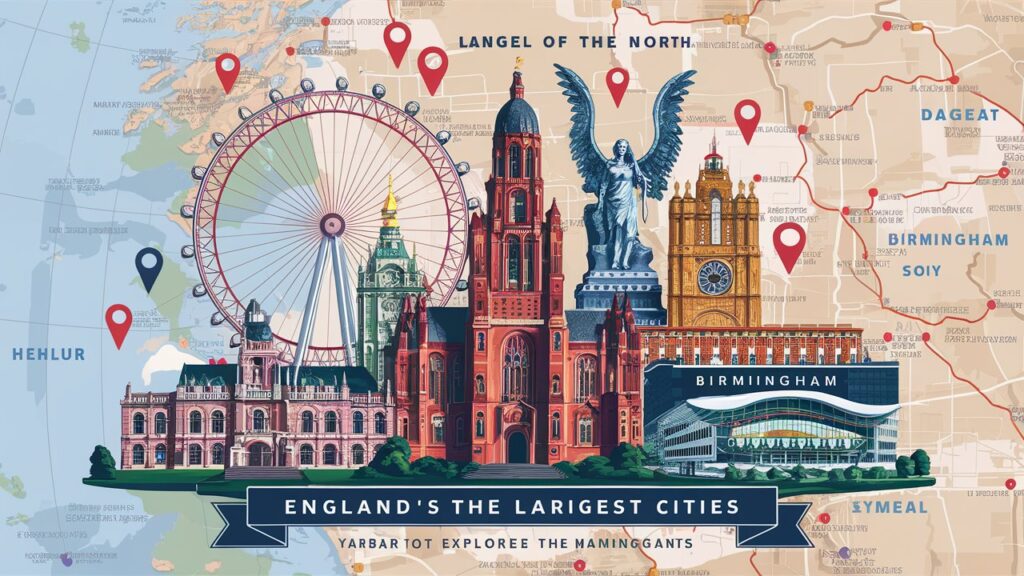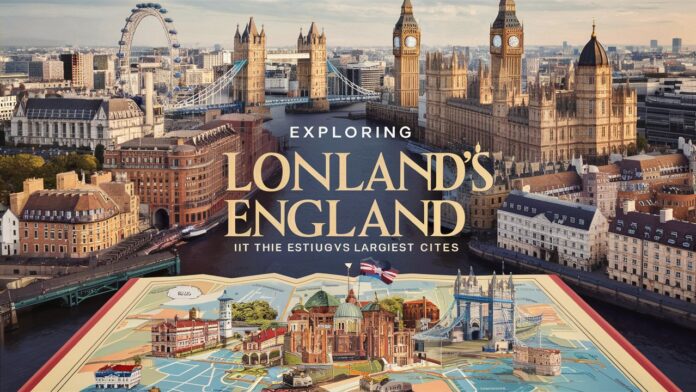Introduction
England’s cities are a vibrant tapestry of history, culture, and modernity, each offering unique contributions to the nation’s identity. From the bustling streets of London to the industrial heartlands of the North, England’s biggest cities are hubs of innovation, heritage, and diversity. This article delves into the largest urban centers in England, exploring their histories, key features, and roles in shaping the country’s socio-economic landscape. Whether you’re a traveler, student, or history enthusiast, understanding these cities provides insight into England’s past, present, and future.
1. London: The Global Metropolis
London, England’s capital and largest city, is a global powerhouse renowned for its financial districts, historic landmarks, and multicultural population. Home to over 9 million residents, London’s influence extends far beyond its borders, serving as a center for finance (the City of London), politics (Westminster), and culture (West End theatres, museums like the British Museum). The River Thames snakes through the city, connecting iconic sites such as the Tower of London, Buckingham Palace, and the Shard. Despite its modern skyline, London retains pockets of history in areas like Covent Garden and Camden, offering a blend of old-world charm and cutting-edge innovation.
2. Birmingham: The Heart of the Midlands
Birmingham, often dubbed the “Second City,” is a testament to England’s industrial legacy. With a population exceeding 1.1 million, it is the largest city in the West Midlands and a hub for manufacturing, education, and the arts. The city’s canals, once vital for trade during the Industrial Revolution, now host trendy waterfront developments like Brindley Place. Birmingham’s cultural scene thrives in institutions like the Birmingham Museum and Art Gallery, while its diverse culinary landscape reflects its multicultural communities. Recent regeneration projects, such as the Bullring Shopping Centre and HS2 high-speed rail, underscore its ambition to compete globally.
3. Manchester: The Northern Powerhouse
Manchester, a city synonymous with innovation and resilience, has evolved from its textile-industry roots into a dynamic urban center. With a population of over 550,000, it anchors the Greater Manchester region and is celebrated for its contributions to music, sports, and education. The University of Manchester and MediaCityUK highlight its role in academia and digital media, while landmarks like Old Trafford and the Manchester Arena draw millions annually. The city’s spirit of reinvention is evident in its thriving Northern Quarter, where street art and indie businesses coexist with remnants of its industrial past.
4. Leeds: The Commercial Hub of Yorkshire
Leeds, the largest city in Yorkshire, is a bustling commercial and cultural hub with a population of 800,000. Known for its legal and financial sectors, Leeds combines Georgian architecture with modern developments like the Trinity Leeds shopping complex. The city’s vibrant nightlife, centered around Call Lane and Briggate, complements its cultural offerings, such as the Leeds Art Gallery and annual Leeds Festival. As a key player in the Northern Powerhouse initiative, Leeds continues to attract businesses and students, bolstered by its prestigious universities and transport links.
5. Liverpool: Maritime Heritage and Cultural Legacy
Liverpool, a UNESCO World Heritage city, is famed for its maritime history and cultural exports, including The Beatles. With a population of 500,000, it boasts landmarks like the Royal Albert Dock, the Liverpool Cathedral, and the Cavern Club. The city’s waterfront, once the heartbeat of transatlantic trade, now houses museums like the Merseyside Maritime Museum. Liverpool’s football clubs, Everton and Liverpool FC, are integral to its identity, while initiatives like the Liverpool Biennial showcase its artistic ambitions. Regeneration projects, such as the Liverpool Waters development, aim to revitalize its northern docks.

6. Bristol: A Blend of Innovation and History
Bristol, a city of 470,000 in South West England, merges historic charm with forward-thinking sustainability. Known for its maritime heritage, highlighted by the SS Great Britain, Bristol is also a pioneer in green energy and aerospace engineering (home to Airbus UK). The Harbourside area buzzes with cafes, galleries, and the annual Bristol International Balloon Fiesta. Street art by Banksy dots the city, reflecting its rebellious spirit, while the Clifton Suspension Bridge stands as an engineering marvel. Bristol’s focus on eco-friendly policies, such as its cycling infrastructure, underscores its modern ethos.
7. Newcastle upon Tyne: The Gateway to the North East
Newcastle upon Tyne, affectionately called Newcastle, is the cultural and economic anchor of North East England. With a population of 300,000, it’s renowned for its nightlife along the Quayside, architectural gems like the Newcastle Castle, and the iconic Tyne Bridge. The city’s universities drive innovation, while the Baltic Centre for Contemporary Art symbolizes its creative revival. Newcastle’s industrial past, rooted in coal and shipbuilding, contrasts with its modern identity as a center for digital technology and life sciences.
8. Sheffield: The Steel City Reinvented
Sheffield, nestled in South Yorkshire, has transformed from its steel-producing heyday into a green, modern city. Home to 580,000 residents, it boasts expansive green spaces like the Peak District National Park and the Winter Garden. The University of Sheffield and Sheffield Hallam University fuel its reputation as a student-friendly city, while its music scene birthed bands like Arctic Monkeys. Advanced manufacturing and robotics now drive its economy, aligning with initiatives like the Advanced Manufacturing Innovation District.
Factors Driving the Growth of England’s Biggest Cities
The expansion of England’s cities stems from economic opportunities, infrastructure investments, and cultural appeal. London’s global connectivity attracts multinational corporations, while regional cities benefit from government schemes like the Northern Powerhouse. Universities act as talent pipelines, and cultural landmarks boost tourism. However, challenges such as housing shortages and transportation congestion require ongoing urban planning.
Challenges Facing England’s Urban Centers
Urbanization brings issues like affordability, pollution, and social inequality. London’s housing crisis contrasts with efforts in Manchester and Leeds to build sustainable communities. Cities are adopting smart technologies and green policies, such as Bristol’s carbon-neutral goals, to balance growth with livability.
Conclusion
England’s biggest cities are more than population statistics—they are living narratives of resilience, creativity, and diversity. From London’s global influence to Sheffield’s green reinvention, each city contributes uniquely to the nation’s fabric. Understanding their stories enriches our appreciation of England’s past achievements and future aspirations.
Frequently Asked Questions (FAQs)
Q1: What is the largest city in England?
A: London is the largest, with over 9 million residents.
Q2: How do England’s cities differ culturally?
A: Cities like Liverpool and Manchester have distinct musical legacies, while Bristol and Newcastle emphasize maritime history and innovation.
Q3: Which city is best for tourism?
A: London tops for landmarks, but Liverpool (The Beatles) and Bath (near Bristol) offer unique experiences.
Q4: Are all major cities in England economic hubs?
A: Yes—London (finance), Birmingham (manufacturing), and Leeds (legal services) each specialize in different sectors.
Q5: How are cities addressing population growth?
A: Through urban regeneration (Manchester’s skyscrapers) and sustainable housing projects (Bristol’s eco-homes).
Q6: What role do universities play in these cities?
A: They drive innovation (Cambridge/Oxford proximity to London) and attract international students, boosting local economies.
Q7: Which city has the most green spaces?
A: Sheffield, with the Peak District, is often called the “greenest city.”
Q8: How has industrial decline affected these cities?
A: Many, like Manchester and Sheffield, have pivoted to tech, education, and culture to revive their economies.
This guide offers a deep dive into England’s urban giants, celebrating their past and envisioning their future.

